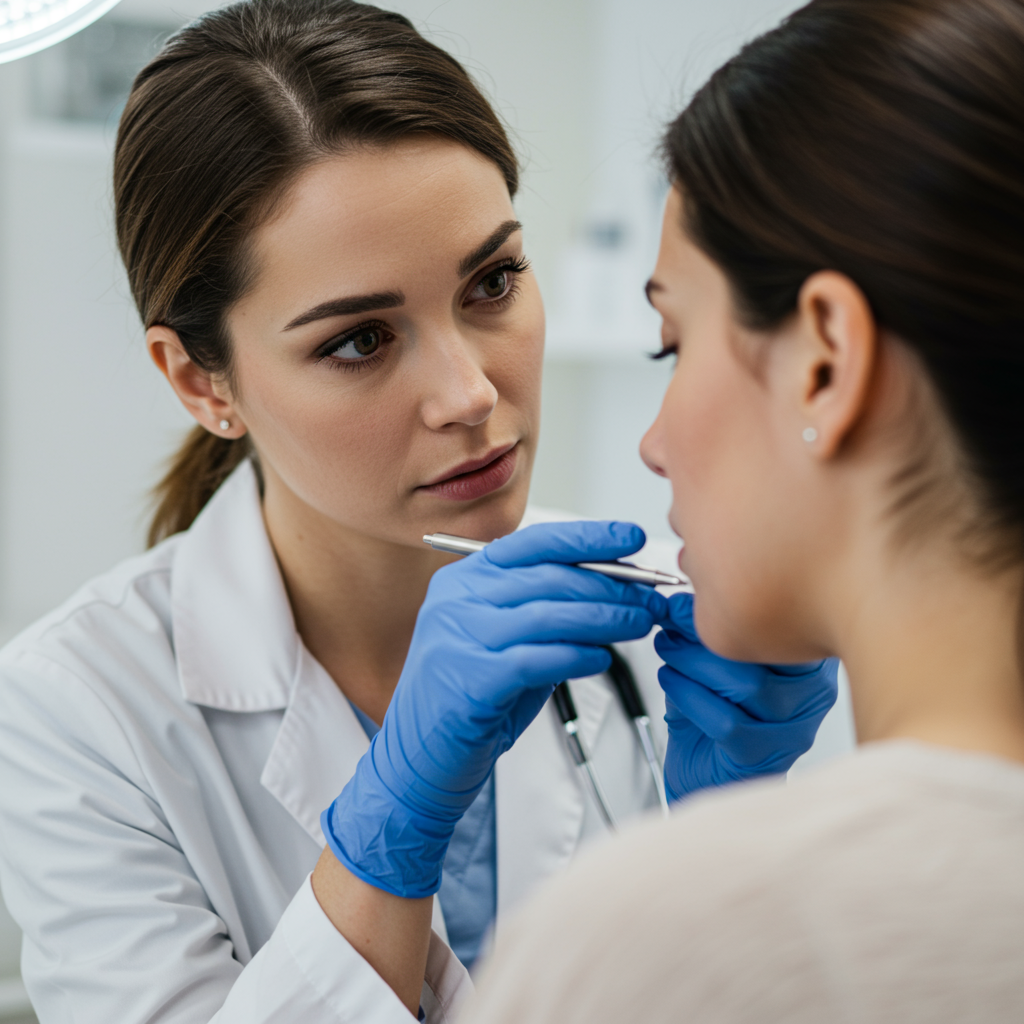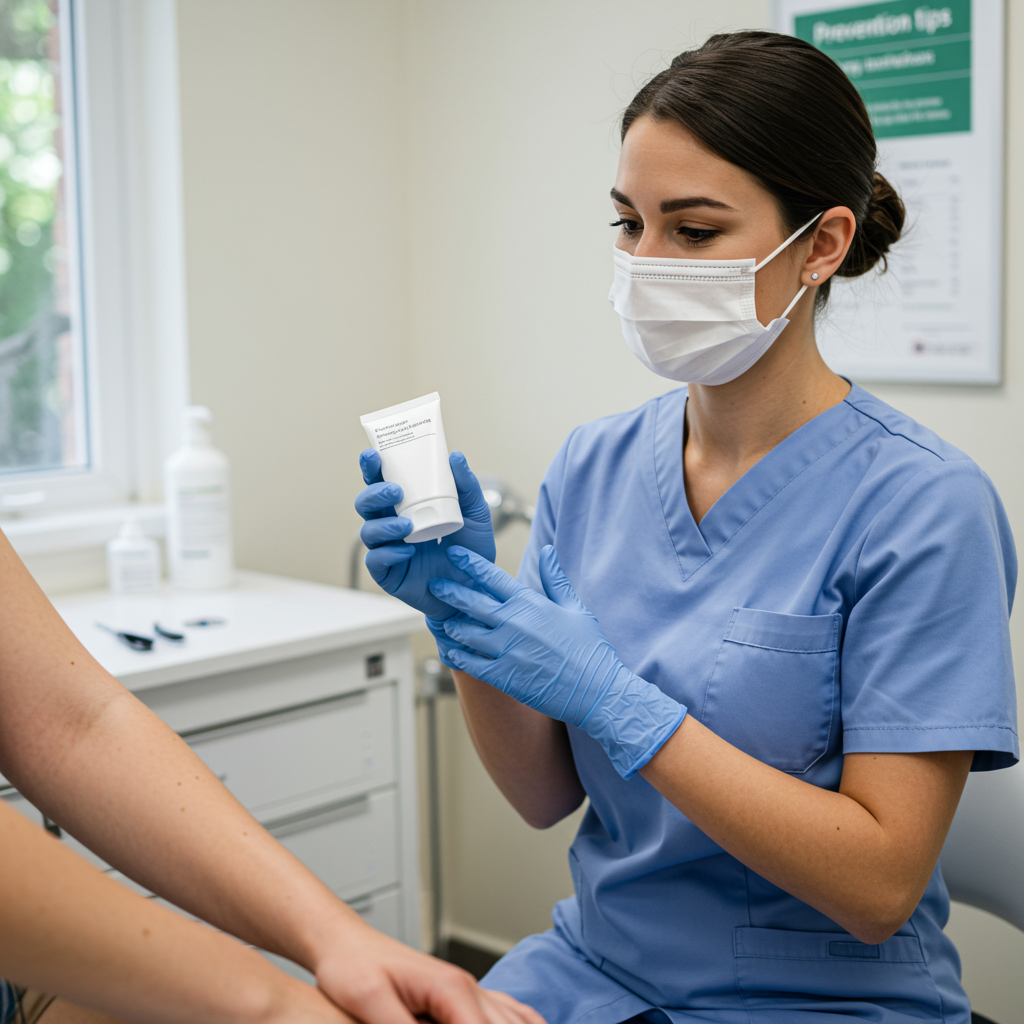
Table of Contents
Introduction
Skin infections are more common than many people realize, affecting individuals of all ages and backgrounds. Imagine waking up with an itchy, red patch that quickly worsens or noticing a suspicious sore that doesn’t heal — sudden skin infections can disrupt everyday life and cause considerable discomfort. Understanding how to treat these infections promptly and effectively is crucial to preventing complications and maintaining healthy skin.
The significance of addressing skin infections early cannot be overstated, as untreated infections can spread or worsen, potentially requiring more intensive medical interventions. According to healthcare studies, thousands of reported cases of bacterial, fungal, and viral skin infections occur yearly, underscoring the importance of education and awareness around prevention and treatment methods. While many skin infections result from bacteria or fungi, viral and parasitic causes also contribute to this prevalent health concern. Commonly, cuts, scrapes, or prolonged moisture on the skin can invite these pathogens, making it essential to recognize risks and adopt good hygiene and care practices.
For many, the idea of dealing with a skin infection might evoke anxiety or embarrassment, yet it’s a health issue that deserves attention and understanding. Knowing what signs to watch for and the variety of treatment options available empowers individuals to take control of their health with confidence. If you’re new to the topic, you might want to start with how to treat sebaceous cysts, which provides insight into managing common skin lumps and infections effectively. By gaining knowledge, you can reduce the fear and uncertainty surrounding skin infections and take proactive steps toward healing and prevention.
Whether you’re experiencing symptoms personally or caring for loved ones, knowing the causes, symptoms, and treatment options helps ensure timely care and reduces the risk of complications. Many people also wonder about skincare products for sensitive skin, which play a crucial role in supporting recovery and protecting vulnerable skin during infection. Addressing skin infections holistically—through both medical treatment and proper skincare—is key to restoring comfort and confidence quickly.
What You’ll Learn in This Guide
In this comprehensive guide, we’ll walk you through everything you need to know about treating skin infections. Here’s what we’ll cover:
- Understanding Skin Infections: We’ll break down the different types of infections, from bacterial and fungal to viral and parasitic, explaining what causes each and how they affect the skin.
- Recognizing Symptoms: You’ll learn to identify typical signs such as redness, swelling, itching, and discharge, enabling early detection and prompt action.
- Treatment Options: Explore both home care strategies and medical treatments, including the use of over-the-counter remedies, prescription medications, and when to seek professional help.
- Prevention and Care Tips: Discover practical advice on maintaining healthy skin, preventing infections, and knowing when to consult a healthcare provider to protect yourself and your family effectively.
Before diving into specifics, it’s important to understand that skin infections vary widely in cause and severity. This guide is structured to help you take the right approach depending on your symptoms and situation. Whether the infection is minor and manageable at home or severe requiring medical intervention, you’ll find valuable insights here designed to empower your decision-making and care practices.
As you continue reading, we will delve into detailed explanations of infection types, causes, and risks to build a strong foundation of knowledge. Following that, we’ll address symptom recognition and explain how to distinguish between simple irritations and infections that could need urgent attention. Treatment sections will equip you with practical strategies, and prevention tips will help you minimize the chances of future infections.
Skin infections can be challenging but manageable with the right information and care. By the end of this guide, you will be better prepared to identify infections early, understand your treatment options, and take proactive steps to maintain healthy skin. Let’s embark on this journey to healthier skin, starting with the fundamentals of understanding skin infections.

Building upon the introductory overview of skin infections, it is essential to explore the topics of recognizing the signs and symptoms and understanding treatment options. Prompt and accurate identification of skin infections can lead to timely treatment and prevention of complications, which is critical for maintaining healthy skin and overall well-being. This discussion will delve into how to identify common symptoms of skin infections and explore both home care and medical treatments available. Understanding these aspects thoroughly empowers individuals to respond effectively and protect their skin health.
Signs and Symptoms of Skin Infections
Recognizing the signs and symptoms of skin infections is the first step in determining whether treatment is necessary. Skin infections can manifest in various ways, depending on the type and severity, and being aware of these indicators aids in early detection. Typical symptoms often include visible changes to the skin such as redness, swelling, and irritation. However, some infections may have additional signs like pain or discharge, which suggest more serious involvement. Identifying these symptoms early and accurately can prevent the infection from worsening or spreading, making timely medical evaluation crucial. To gain a deeper understanding of symptoms associated with different skin infections, it helps to have a foundational knowledge of what skin infections generally entail.
Moreover, awareness of symptoms improves communication with healthcare providers, ensuring better diagnosis and appropriate intervention. Personal observation combined with medical advice forms the cornerstone of effective skin infection management. Paying attention to changes on the skin surface and associated discomfort contributes significantly to successful treatment outcomes.
Typical Symptoms of Skin Infections
Several common symptoms generally indicate the presence of a skin infection. Being familiar with these prepares individuals to seek proper care when needed. The main symptoms include:
- Redness and inflammation: These are often the earliest visible signs of infection, indicating an immune response to invade pathogens causing skin irritation and swelling.
- Itching and irritation: Many skin infections cause uncomfortable itching sensations, which can exacerbate the condition if scratched excessively, leading to further damage or spread.
- Pain and tenderness: Affected skin areas frequently become painful or tender to touch, reflecting underlying tissue involvement and inflammation severity.
- Swelling and pus or discharge: Some infections progress to produce localized swelling accompanied by pus or other discharge, signaling bacterial involvement and the potential need for medical treatment.
Treatment Options for Skin Infections
Once symptoms and diagnosis point to a skin infection, selecting the right treatment approach is crucial. Treatment depends on factors such as the type of infection—bacterial, fungal, viral, or parasitic—its severity, and the individual’s overall health. Many mild skin infections can be managed effectively at home with proper care, while more severe or persistent infections require medical interventions. Understanding the spectrum of treatment options enables individuals to take appropriate steps to heal the infection, relieve symptoms, and prevent recurrence. Reliable guidance from healthcare professionals ensures that treatment is tailored and safe.
Additionally, timely treatment reduces complications like the spread of infection or systemic involvement. Integration of home care strategies with medical treatments often yields the best outcomes. To navigate these options wisely, it is helpful to familiarize oneself with common treatment methods and the rationale behind them.
Home Care Treatments
Home care plays a vital role in managing minor skin infections and supporting medical therapies. Practical, daily steps help maintain skin hygiene and promote healing through accessible techniques. Key home treatments include:
- Keeping the affected area clean and dry: Regular cleaning prevents further bacterial or fungal growth and reduces irritation, creating an environment conducive to healing.
- Using over-the-counter creams and ointments: These topical agents may contain antibacterial, antifungal, or soothing ingredients that target infection symptoms and reduce inflammation effectively.
- Applying warm compresses to ease symptoms: Warm compresses enhance blood flow to the area, helping to relieve discomfort, reduce swelling, and facilitate drainage of pus when present.
- Avoiding scratching to prevent worsening the infection: Refraining from scratching lessens the risk of skin breaks and secondary infections, which can complicate recovery.

Conclusion
Skin infections, which can arise from bacterial, fungal, viral, or parasitic sources, present a common yet diverse challenge affecting people of all ages. These infections often originate from broken skin, poor hygiene, immune system weaknesses, or contact with contaminated environments. Recognizing the symptoms such as redness, swelling, pain, itching, and discharge is vital for timely intervention. Depending on the type and severity of the infection, treatment may range from simple home remedies like keeping the area clean and dry, applying over-the-counter creams, and using warm compresses, to professional medical care involving prescription antibiotics, antifungal medications, or minor surgical procedures.
Preventing skin infections largely depends on good personal hygiene, proper wound care, avoiding sharing personal items, and protective measures in high-risk settings. It is crucial to be aware of warning signs that indicate when professional help is necessary, including rapidly spreading redness, severe pain, fever, or lack of improvement with home care. This holistic understanding empowers individuals to respond swiftly and properly to skin infections, reducing complications and promoting overall skin health.
To act effectively upon this knowledge, focus on maintaining impeccable hygiene by washing hands regularly and protecting any cuts or abrasions with clean dressings. Use appropriate topical treatments as recommended for your specific infection type, and avoid scratching to prevent worsening or spreading. If symptoms persist or worsen, seek medical advice promptly to obtain proper diagnosis and advanced treatment. For more insights on managing related skin conditions, you may also explore how to treat sebaceous cysts with effective home and medical care, or learn to choose gentle skincare products for sensitive skin that support healing and protect delicate skin.
Remember, timely treatment and preventive care are your best allies in keeping infections at bay and ensuring your skin remains healthy and resilient. By staying informed and proactive, you are empowered to protect your skin and maintain your overall well-being with confidence and clarity.
